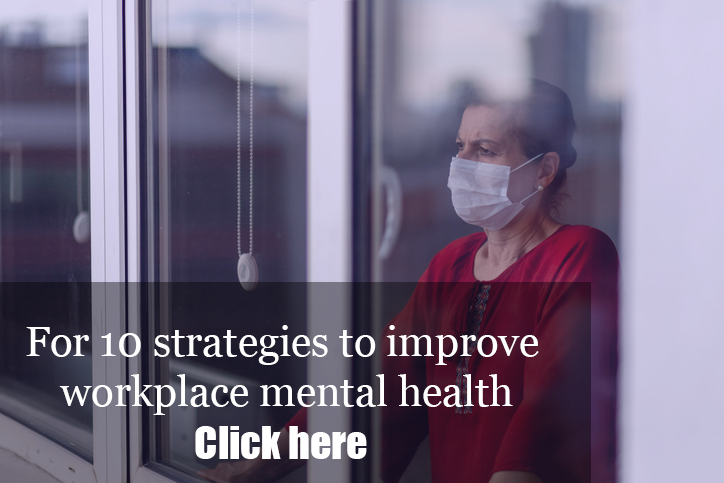Employees are showing signs of improvement in their mental health, yet they remain significantly at risk for depression and general anxiety due to COVID-19, according to Total Brain’s latest Mental Health Index. Worse yet, experts caution that employees’ mental health will decline going into the fall and winter months as stresses from the election, the holidays and colder weather exacerbate issues.
Click here to sign up for HRE’s daily newsletters.
According to the latest Mental Health Index: U.S. Worker Edition, employees’ risk of depression (up 64%) and general anxiety (up 43%) remain significantly elevated when compared to pre-pandemic levels. Yet the risk of general anxiety disorder is stable from August to September and risk of depression saw a 6% increase. Meanwhile, risk of PTSD declined 22% from August to September and is approaching February levels–a sign of continued adaptation to the current state of our world.
“It’s stable, but it’s stable at a very high level,” said Total Brain CEO Louis Gagnon.
Related: Why employers should act now on mental health
The index, compiled in partnership with the National Alliance of Healthcare Purchaser Coalitions, One Mind at Work, and the HR Policy Association and its American Health Policy Institute, is based on 500 anonymized assessments randomly selected among thousands of Total Brain assessments taken each week.
“People are likely getting used to the drama,” Gagnon said. “Over time an adaption [takes place] psychologically, which may likely be happening here.”
Other positive news is that employers have been helping to make strides in flattening the curve, said Katy Riddick, director of strategy and engagement, One Mind at Work.
 Some employers have been encouraging workers to create work-life balance–especially as remote work blurs those lines–and take breaks or vacation time. Some have even been shutting down an email server at certain times so employees know “it’s OK to take that time away, even if it’s just in your house,” she said.
Some employers have been encouraging workers to create work-life balance–especially as remote work blurs those lines–and take breaks or vacation time. Some have even been shutting down an email server at certain times so employees know “it’s OK to take that time away, even if it’s just in your house,” she said.
Employers also are looking at integrating tech tools and programs so they can help employees improve their mental health. “It’s really making a strong connection between, ‘You’re at risk; you’re showing signs’ so they’re aware, but also that followup piece of not just being aware, but what they can do about it,” she said.
Related: Could AI improve mental health?
McHugh said it’s vital that employers maintain a sharp focus on employees’ wellbeing. “Workers are expecting more out of their employers; they’re looking for help with topics they would have never asked for help with before,” including school, tutoring or caregiving, she said.
Although the index does show some improvement in mental health conditions, Thompson stressed that rates of depression and anxiety are still shockingly high and employers cannot back down on their efforts.
“We have plateaued a little bit, though at a high level,” he said. “But we don’t know where we’re headed, and we do suspect it’s not necessarily headed in the right direction because this stuff does have a tendency to wear.”

